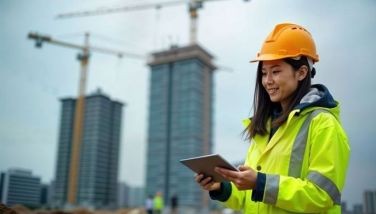Living with reality
I first visited the country of Japan in 1990. I was really fortunate I stayed for two whole months and not just in one particular city but I was visiting cities all over. As part of their "foreign aid," Japan conducts "Country Courses" on a variety of subjects, through the Japan International Cooperation Agency. I think they still do this, to this day. Ours, back then was a Country Course in City Planning. Together with 12 other participants from different continents of the world, we mainly had our lectures in a JICA Training Center in Tokyo. But we also visited 6 other cities, at four days each, to learn about the "experiences" of each, as a practical exposure to the lessons we learned in Tokyo. At one time, we hit a snag, stranded in one city, because a storm passed and the Shinkansen, their "bullet train," that can travel around 240 km. per hour (at that time) stopped operating because a tunnel got flooded.
What really got our attention was the Japanese nonchalant demeanor in the face of that setback. This was right before the bust of the bubble economy in Japan, when the country was riding at the crest of its golden economy, almost ready to take over the world. Japan was then everything could ask for in any country's development - cities, cars, electronic gadgets, subways, etc. A storm struck and half the country, 80% of the economy, was at a standstill for a day. Yet, people were acting naturally - no anger and frustration, no complaining, no heightened emotions, no nothing. Our training staff told us to stay put because they said the stations will be opened in 12 hours, as what the train companies promised. And open they did, exhibiting accuracy in fixing things and the determination to do it. We asked the staff about this and they said, "Storms come each year, so why complain about it."
When many of us (from different parts of the world) shared that we do have our shares of storms and typhoons back home, often the cause of general distress and anxiety, our Japanese host told us that, no, they don't look at storms as something bad. In fact, they even pray for the storms to come. "If they won't," they reason, "then our dams won't be filled up, many rice fields will be left un-irrigated, and there will be a terrible power shortage (apparently, a big bulk of their power comes from hydroelectric plants). So they pray for storms, prepare for them, and simply accept their occurrence every year. Even earthquakes, they added.
We can learn a lesson or two from these simple examples. Sometimes, we are simply too proud to accept that we are just a feeble component of the entire earth system. Whether we like it or not, disasters will strike, and we simply have to prepare for them, but in a way that we don't resist the power of nature. That's why I'm not too keen on making new things "disaster-proof." We have to learn to live with nature, not to live against it. Pinatubo erupted and will probably do so again, so why build cities and communities near it. It's this trait of trying to challenge nature face to face that sometimes gets us into worst trouble we shouldn't be.
And we devise schemes like ordering a 40-meter no-build zone along the shoreline of Tacloban in the aftermath of "Yolanda." Well, after the kind of storm surge which left a swath of total destruction more than a kilometer inland that might seem like a good idea. But why 40 meters? And what will happen to the fisher folks who earn their living from the sea. Everywhere else in the whole wide world, fishermen and their kin, live beside the seashore. Even in Japan. This is the kind of knee-jerk reaction which needs to be rationalized later.
Human life is what we should protect, not things or properties or belongings. Buffer areas should be carefully studied - storm surges are different everywhere and come in different height and configuration, we can't set a uniform 40 meters width of no human activity in response. And why should we? Land use planning is the key - storms are not like earthquakes that come unannounced. The better thing to do is zone the water's edge for industrial or commercial, roads or parks, or anything non-residential, and move all residential areas inland. Don't worry about structure, we can rebuild. But people's lives, we can't recover. So the aim should be to protect life, not "things." That goes the same anywhere in these isles of ours.
- Latest




















